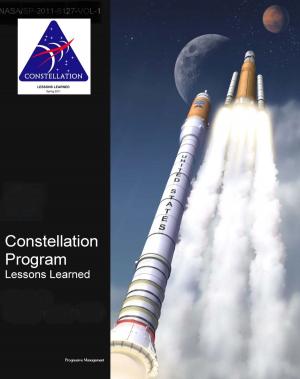Within Limits: The U.S. Air Force and the Korean War - MiG Alley, Douglas MacArthur, Chinese Intervention, Syngman Rhee, Fifth Air Force, F-80, B-29, Buzz Aldrin
Nonfiction, History, Asian, Korean War, Military, Aviation| Author: | Progressive Management | ISBN: | 9781310179037 |
| Publisher: | Progressive Management | Publication: | April 21, 2014 |
| Imprint: | Smashwords Edition | Language: | English |
| Author: | Progressive Management |
| ISBN: | 9781310179037 |
| Publisher: | Progressive Management |
| Publication: | April 21, 2014 |
| Imprint: | Smashwords Edition |
| Language: | English |
Here is the story of the U.S. Air Force's role in the Korean War. Despite American success in preventing the conquest of South Korea by communist North Korea, the Korean War of 1950-1953 did not satisfy Americans who expected the kind of total victory they had experienced in World War II. In that earlier, larger war, victory over Japan came after two atomic bombs destroyed the cities of Hiroshima and Nagasaki. But in Korea five years later, the United States limited itself to conventional weapons. Even after communist China entered the war, Americans put China off-limits to conventional bombing as well as nuclear bombing. Operating within these limits, the U.S. Air Force helped to repel two invasions of South Korea while securing control of the skies so decisively that other United Nations forces could fight without fear of air attack.
Before dawn on Sunday, June 25, 1950, communist North Korea attacked South Korea, storming across the improvised border that divided the peninsula into two countries. Some five years earlier, when Japan surrendered, the United States had proposed that American forces disarm Japanese forces in Korea south of the 38th parallel and Soviet troops perform the same task north of that line. Once the Japanese had been disarmed and repatriated, Korea was at last to become independent after almost fifty years of domination by Japan. This scenario depended on continued cooperation between the Soviet Union and the United States, but the wartime alliance soon collapsed. Instead of a unified nation, two rival states came to share the Korean peninsula. The Soviet Union supported the Democratic People's Republic of Korea, or North Korea, under the leadership of Kim Il Sung, a shadowy figure who had fought the Japanese and fled to the Soviet Union where he apparently served in the armed forces. The United States stood behind the Republic of Korea, or South Korea, headed by seventy-year-old Syngman Rhee, an implacable foe of the Japanese who had earned a doctorate at Princeton University before World War I, returned to his homeland only to be expelled in 1921 by the Japanese, and spent the next twenty-five years in exile campaigning for Korean independence. When the newly constituted national assembly elected Rhee president of South Korea in August 1948, the United States terminated the military government that had ruled the South and began withdrawing its occupation forces.
Syngman Rhee and Kim Il Sung, headed opposing governments on an arbitrarily divided peninsula. The 38th parallel did not conform to any natural feature that might have separated North from South. In fact, the two Koreas complemented each other; in the North were the industries developed by the Japanese, while in the South, where two-thirds of the people lived, the principal activity was farming. Given the interdependence of the two regions and the ambitions of their leaders, some sort of clash was inevitable. Soon insurgents directed from the North were challenging the authority of President Rhee, who responded by trying to suppress all dissent in the South, whether communist-inspired or not.
Here is the story of the U.S. Air Force's role in the Korean War. Despite American success in preventing the conquest of South Korea by communist North Korea, the Korean War of 1950-1953 did not satisfy Americans who expected the kind of total victory they had experienced in World War II. In that earlier, larger war, victory over Japan came after two atomic bombs destroyed the cities of Hiroshima and Nagasaki. But in Korea five years later, the United States limited itself to conventional weapons. Even after communist China entered the war, Americans put China off-limits to conventional bombing as well as nuclear bombing. Operating within these limits, the U.S. Air Force helped to repel two invasions of South Korea while securing control of the skies so decisively that other United Nations forces could fight without fear of air attack.
Before dawn on Sunday, June 25, 1950, communist North Korea attacked South Korea, storming across the improvised border that divided the peninsula into two countries. Some five years earlier, when Japan surrendered, the United States had proposed that American forces disarm Japanese forces in Korea south of the 38th parallel and Soviet troops perform the same task north of that line. Once the Japanese had been disarmed and repatriated, Korea was at last to become independent after almost fifty years of domination by Japan. This scenario depended on continued cooperation between the Soviet Union and the United States, but the wartime alliance soon collapsed. Instead of a unified nation, two rival states came to share the Korean peninsula. The Soviet Union supported the Democratic People's Republic of Korea, or North Korea, under the leadership of Kim Il Sung, a shadowy figure who had fought the Japanese and fled to the Soviet Union where he apparently served in the armed forces. The United States stood behind the Republic of Korea, or South Korea, headed by seventy-year-old Syngman Rhee, an implacable foe of the Japanese who had earned a doctorate at Princeton University before World War I, returned to his homeland only to be expelled in 1921 by the Japanese, and spent the next twenty-five years in exile campaigning for Korean independence. When the newly constituted national assembly elected Rhee president of South Korea in August 1948, the United States terminated the military government that had ruled the South and began withdrawing its occupation forces.
Syngman Rhee and Kim Il Sung, headed opposing governments on an arbitrarily divided peninsula. The 38th parallel did not conform to any natural feature that might have separated North from South. In fact, the two Koreas complemented each other; in the North were the industries developed by the Japanese, while in the South, where two-thirds of the people lived, the principal activity was farming. Given the interdependence of the two regions and the ambitions of their leaders, some sort of clash was inevitable. Soon insurgents directed from the North were challenging the authority of President Rhee, who responded by trying to suppress all dissent in the South, whether communist-inspired or not.















